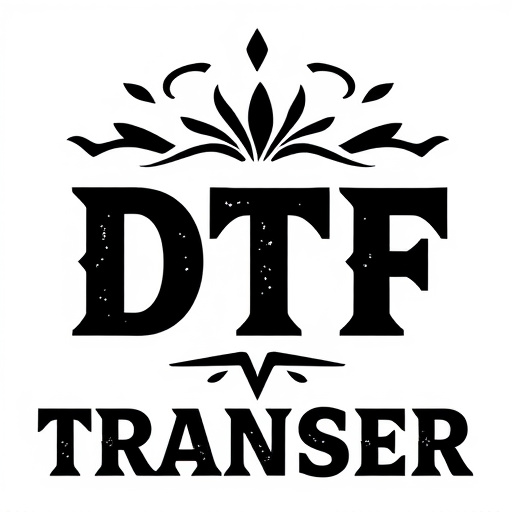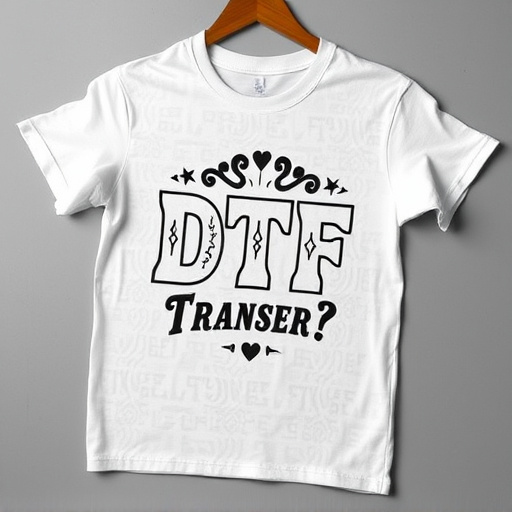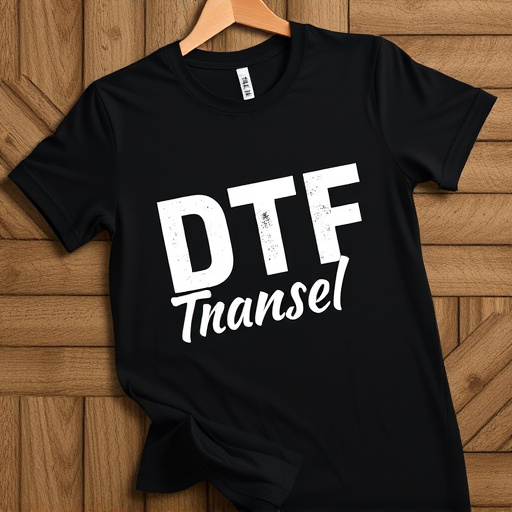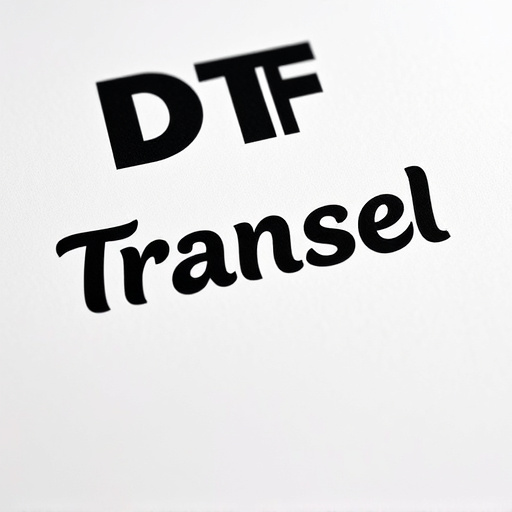Direct-to-film (DTF) transfer printing revolutionizes textile design with its advanced, cost-effective process. Using UV curable inks and specialized films, DTF creates vibrant, durable prints on diverse fabrics, resisting fading and damage from washing. Ideal for custom apparel and home decor, DTF enables businesses and designers to swiftly bring high-quality, unique designs to market. Choosing the right materials and proper care ensures DTF prints maintain their integrity over time, making it a versatile, popular method in fashion and design.
Discover the revolutionary world of Direct-to-Film (DTF) Transfer printing, where quality remains intact even after multiple washes. This comprehensive guide explores the science behind DTF Printing, its benefits in terms of longevity and durability, and the essential considerations for optimal results. We delve into real-world applications from fashion to home decor, providing insights on choosing materials and overcoming common challenges. Unlock the full potential of DTF Prints with this detailed overview.
- Understanding Direct-to-Film (DTF) Transfer: A Comprehensive Overview
- The Science Behind DTF Printing: How It Maintains Quality
- Benefits of DTF Prints: Longevity and Durability in Focus
- Choosing the Right Materials for Optimal DTF Results
- Common Challenges in DTF Printing and How to Overcome Them
- Real-World Applications: From Fashion to Home Decor
Understanding Direct-to-Film (DTF) Transfer: A Comprehensive Overview

Direct-to-film (DTF) transfer is a cutting-edge printing technique revolutionizing the textile industry. Unlike traditional methods, DTF skips intermediate steps, directly applying intricate designs onto fabric through a high-resolution printing process. This method yields vibrant, durable prints that can withstand multiple washes without fading or losing quality.
The DTF process involves specialized printers using UV curable ink to create precise, detailed images on various fabrics. Once printed, the design is cured by UV light, forming a bond with the fabric. This results in prints that are both visually stunning and incredibly long-lasting. DTF Printing offers a cost-effective solution for custom apparel, allowing businesses and designers to bring unique, high-quality designs to market swiftly.
The Science Behind DTF Printing: How It Maintains Quality
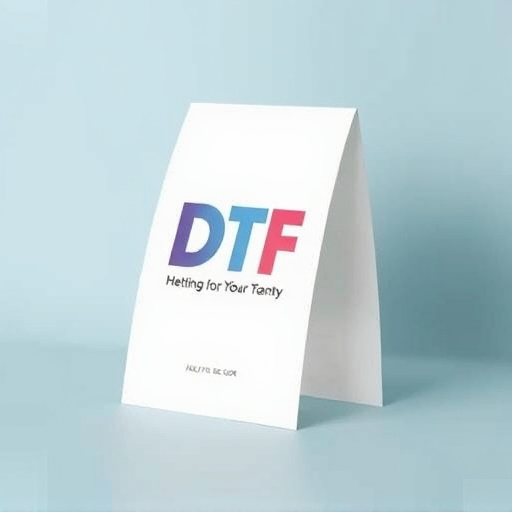
Direct-to-film (DTF) printing is a cutting-edge technique that revolutionizes the way we create and reproduce designs on fabric. The process involves transferring ink directly onto a garment’s surface using heat and pressure, eliminating the need for traditional screening methods. What sets DTF apart is its ability to maintain exceptional quality even after multiple washes.
The science behind this lies in the type of inks used and the precise application method. DTF transfers use high-quality vinyl or polyester inks that are engineered to bond strongly with fabrics. During printing, these inks are heated to a specific temperature, causing them to melt and fuse with the garment’s fibers. This creates a durable, long-lasting bond, ensuring the design remains vibrant and clear even after repeated laundry cycles. The precision of the printing process also plays a crucial role; advanced printers deposit ink precisely, minimizing bleed or smudging that could compromise the final product.
Benefits of DTF Prints: Longevity and Durability in Focus

Direct-to-film (DTF) prints offer a host of benefits when it comes to longevity and durability. One of their key strengths lies in their ability to withstand multiple washes without compromising quality. This makes DTF transfers ideal for clothing, bedding, and other textiles that are subject to frequent washing. The printing process ensures that the colors and designs remain vibrant and crisp even after repeated exposure to water, detergent, and heat from drying machines.
Compared to traditional printing methods, DTF printing provides a more robust solution. The direct application of ink onto the film allows for a seamless fusion with the fabric, creating a durable bond that prevents fading or peeling. This longevity is particularly valuable in the apparel industry, where products are designed to be worn and loved for extended periods. With DTF prints, manufacturers and designers can confidently offer high-quality items that meet the demands of active users while preserving their aesthetic appeal.
Choosing the Right Materials for Optimal DTF Results
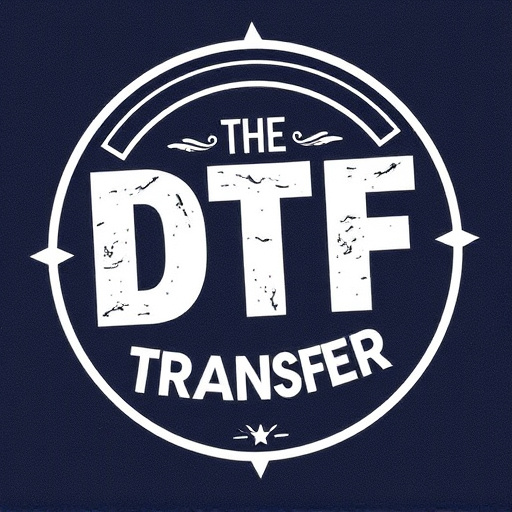
When it comes to achieving high-quality DTF (Direct-to-film) transfers that withstand multiple washes, selecting the right materials is paramount. The key lies in choosing inks and films that are specifically designed for DTF printing. High-performance inks offer vibrant colours and excellent adhesion to a variety of substrates, ensuring the final prints are both visually appealing and durable.
Additionally, using top-quality film bases with protective coatings can significantly enhance washability. These coatings provide an extra layer of protection against fading, cracking, or peeling, even under rigorous laundry conditions. Opting for materials from reputable suppliers ensures that your DTF prints not only look good initially but remain in pristine condition long after they leave the press.
Common Challenges in DTF Printing and How to Overcome Them

Direct-to-film (DTF) printing has gained popularity for its ability to produce high-quality prints on various materials. However, this process isn’t without challenges. One of the primary concerns is maintaining print quality after multiple washes. Ink bleeding, fading, and loss of detail are common issues that can diminish the overall aesthetics of the final product.
To overcome these challenges, several strategies can be employed. Using high-quality inks and media suitable for DTF transfers is essential to ensure longevity. Additionally, optimizing wash settings, including temperature and time, plays a significant role in preserving print integrity. Proper pre-treatment and post-wash care, such as using specific detergents and avoiding harsh chemicals, can also significantly extend the lifespan of DTF prints.
Real-World Applications: From Fashion to Home Decor

Direct-to-film (DTF) transfers and prints have found their way into a diverse range of applications beyond their traditional use in graphic design and marketing. In the fashion industry, DTF technology is increasingly being adopted for creating unique, customizable clothing items. Designers can easily integrate intricate patterns and designs onto various fabrics, offering customers one-of-a-kind pieces. This method allows for small-batch production, catering to the growing trend of personalized fashion.
The versatility of DTF extends to home decor as well. From wall art to soft furnishings, these prints can transform ordinary spaces into vibrant, individualistic environments. High-quality DTF prints on fabric can be used to craft custom curtains, throw pillows, or bed linens, adding a personal touch to interior design. Moreover, the durability of these prints ensures that they withstand multiple washes, making them practical choices for both commercial and residential settings.









